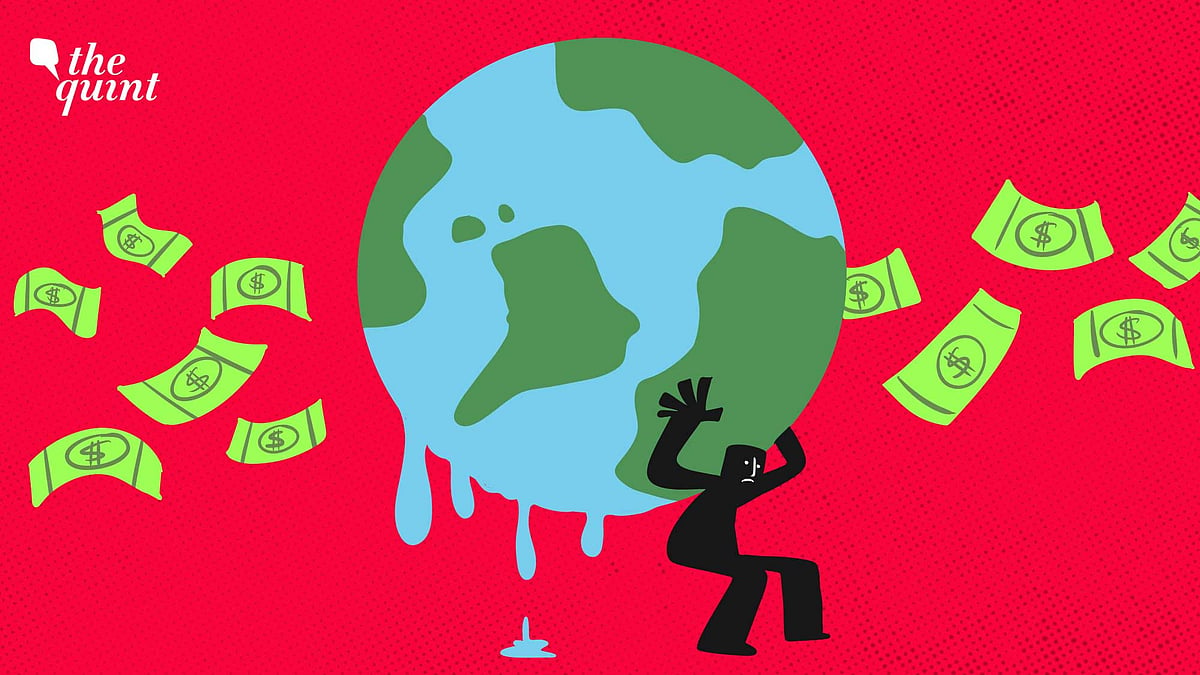'Empty' Promises, Emptier Budgets: UN Reveals Adaptation Gaps Are Growing
With a glaring gap in climate adaptation finance, experts predict a "fundamental breakdown of trust at COP30."

advertisement
This is part of The Quint’s COP30 coverage to help make sense of the crucial climate talks. Become a member to support us.
The United Nations couldn't have possibly chosen a more tragically accurate title for its latest Adaptation Gap Report.
The report—which calculates how big the need for climate adaptation is for developing and poorer nations, and the climate plans the richer countries have made—is titled 'Running on Empty'.
In 2021, rich countries had pledged to double adaptation finance for developing countries to $40 billion per year by 2025. Instead, in 2022, the funding fell to $28 billion, and that further declined to $26 billion in 2023, according to the latest figures compiled in the UN Environment Programme (UNEP) report.
Harjeet Singh, climate activist and founding director of Satat Sampada Climate Foundation, tells The Quint, "The title perfectly describes the state of developing countries. Their national budgets are 'running on empty', stretched thin as they are forced to choose between funding hospitals, schools, or climate defence. But it also describes the promises of developed nations: they are 'running on empty'."
A Damning Report Before COP30
"Climate impacts are accelerating. Yet, adaptation finance is not keeping pace, leaving the world's most vulnerable exposed to rising seas, deadly storms, and searing heat," UN Secretary-General Antonio Guterres said in his message on the report. Beyond the climate adaptation gaps, the report makes a few other stunning observations:
A total of 172 out of 197 countries have a national adaptation plan, strategy, or policy in place. Out of the 25 that do not, only four have not started developing one.
Adaptation plans of 36 countries have not been updated for a decade.
The Glasgow Climate Pact goal of doubling adaptation finance from 2019 levels to $40 billion by 2025 is likely to be missed if current trends continue.
Debt instruments are more popular, making adaptation finance unaffordable in the long run
The target set under the New Collective Quantified Goal (NCQG) at COP29 in Baku — requiring developed countries to mobilise at least $300 billion per year by 2035 for climate action in developing nations, covering both adaptation and mitigation — is “insufficient.” When adjusted for inflation, the needs would increase to $440 billion annually.
Private sector finance can help fill the gap, but its impact may be limited. The report projects up to $50 billion annually in private investment for climate adaptation—well above the current $5 billion.
Climate adaptation is expected to be a big talking point at the upcoming COP30, the planet's largest climate talks, set for November in Belém, Brazil. COP30 President Andre Correa do Lago, on Wednesday, 29 October, said adaptation won't be "relegated to the background".
Despite 172 countries having adaptation plans in place and climate disasters worsening each year, the persistent gap in adaptation finance has experts warning of a “fundamental breakdown of trust at COP30.”
He adds, "You cannot build a new financial future on a foundation of past failures. This amounts to bad-faith negotiation, and it will be met with the anger and frustration it deserves. The Global South and climate justice advocates will demand delivery, not more empty commitments."
Climate advisor Mattias Söderberg of Danish NGO, DanChurchAid, adds:
UNEP chief Inger Andersen painted an even more grim picture. In her foreword to the report, Andersen pointed out that it now "seems unlikely" that the trend in adaptation finance will turn around, as a result of which "many more people will suffer needlessly".
"As action to cut greenhouse gas emissions continues to lag, these impacts will only get worse, harming more people and causing significant economic damage," she added.
India and Global South
For a developing country like India, the adaptation finance gap is not an abstract number. It translates directly into human suffering amid escalating economic damage.
According to Singh, this gap "means that farmers in Maharashtra or Punjab are left without the climate-resilient crops or water-management systems needed to survive intense droughts and erratic monsoons. It means that coastal communities in the Sundarbans, Mumbai, or Chennai are left undefended against sea-level rise and more intense cyclones. It means that cities are left unable to build the infrastructure to protect residents from deadly heatwaves and catastrophic flash floods."
"An unfunded plan is a guarantee of future loss and damage," adds Singh. "These numbers show a deliberate political choice by rich countries to abandon vulnerable communities to a crisis they had no role in creating."
The other crucial aspect is that debt instruments dominate adaptation finance flows. This effectively compounds the crisis for the developing and poorer nations. On one hand, these nations lack the adaptation finance needed to face climate disasters like floods and droughts. On the other hand, they face a spiralling debt crisis.
Singh calls it "an impossible choice".
What the world needs now is unwavering commitment from every stakeholder—especially because climate adaptation serves our shared interests. As Söderberg aptly notes, “We live in a world where our global markets are interconnected.”
Without climate adaptation, even the wealthiest nations will struggle.